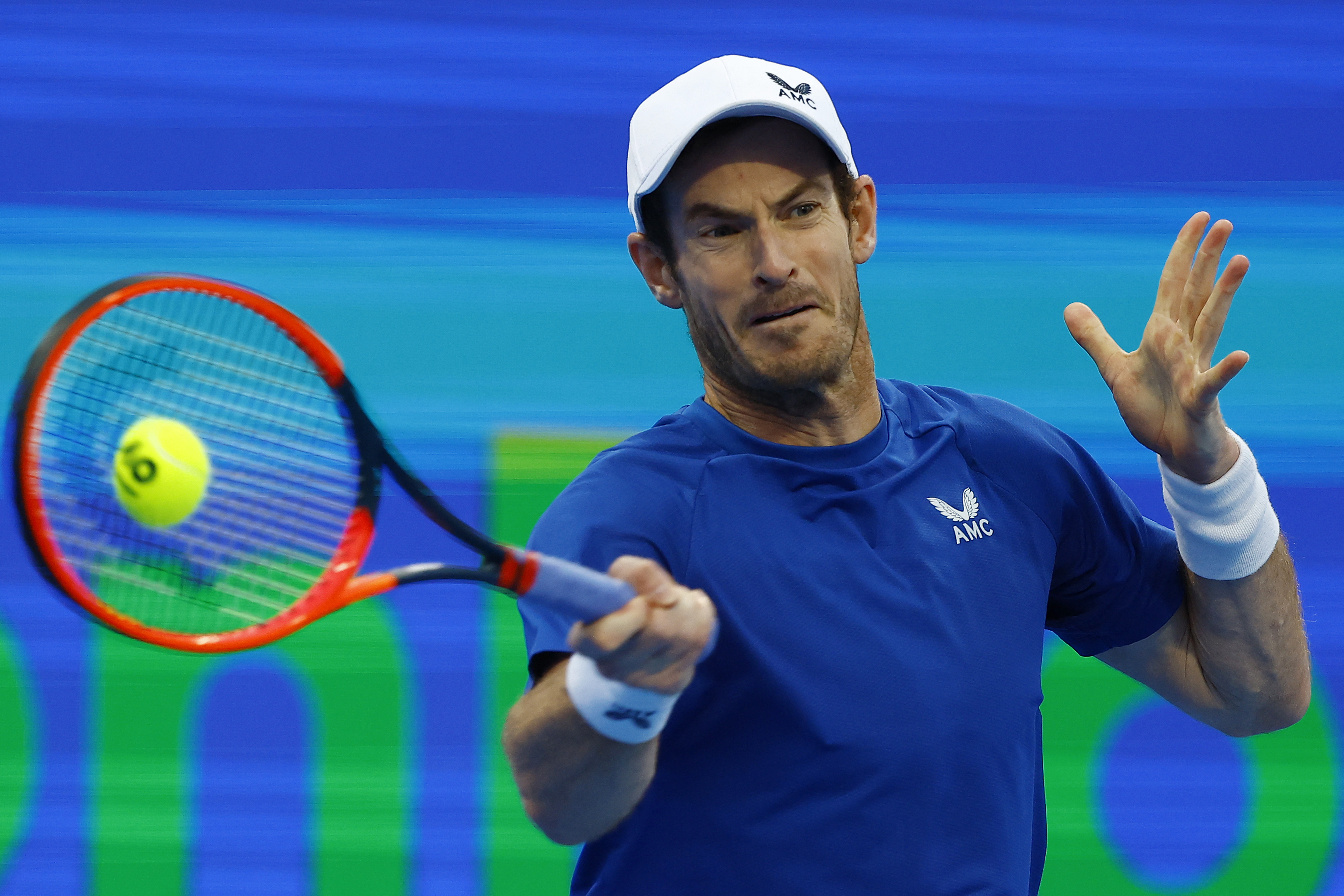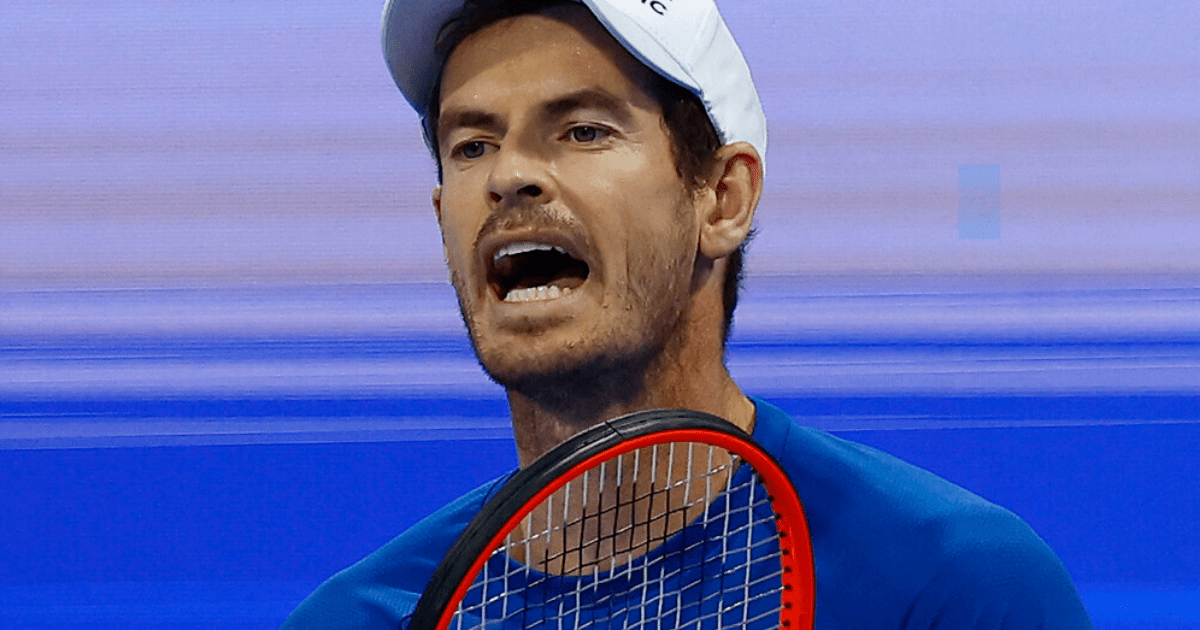Murray's Retirement Hint
During a recent match against Jakub Mensik, Andy Murray expressed frustration by saying, "it's not for me anymore," after missing a break point opportunity.
Murray's Defeat
Despite winning his first match of the season, Murray faced a tough loss to teenager Jakub Mensik in the Qatar Open, marking the longest singles match ever witnessed in Doha.
Impressive Performance
Fans took to social media to praise Murray's dedication and passion for the game, even in the face of defeat, with one stating, "The fact that he has kept his passion for the game to this point is impressive."
Mensik's Victory
Jakub Mensik, born after Murray's first Wimbledon appearance, emerged victorious in a marathon match against the British tennis legend, ultimately moving on to the ATP Tour quarter-final.

Murray's Response
Despite recent retirement rumors, Murray remains determined, stating, "I won’t quit. I will keep fighting and working to produce the performances I know I’m capable of."
Frequently Asked Questions
When can a player start training to improve their chances of becoming a pro?
There is no specific age for beginning professional tennis training, but starting early gives you an advantage. Most professional tennis players start training between the age of 4 and 7 years old. Early development allows for a player to establish a solid foundation with regards to skills, technique and coordination. But it’s also important to maintain a balance between training and childhood development, to encourage a love of the sport without burnout or injury.
Is it possible to become a tennis professional if you start late?
Even though it can be more difficult, someone who starts playing tennis later on in life is still able to reach professional status. Success will depend on athletic ability and dedication as well as access to good coaching and competition. It may take longer for late starters to achieve professional levels, as their training will be intense and highly focused.
What kind of fitness training is essential for tennis players
Tennis is a physically demanding sport that requires a combination of aerobic endurance, anaerobic fitness, speed, strength, and power. Fitness training for tennis players often encompasses cardiovascular exercises to improve endurance, plyometric and explosive exercises for speed and power, weight training for strength, as well as agility drills to enhance footwork and on-court movement. The core stability exercises and balance drills are important for developing the muscular endurance, coordination, and strength necessary to handle the physical demands in tennis.
How important are nutrition and diet in training to become an elite tennis player?
Tennis players are not exempt from the importance of nutrition and diet. Dietary intake is important for intensive training because it provides energy, facilitates recovery and reduces the risk of injury. A balanced diet for elite players includes carbohydrates, proteins and fats along with essential vitamins, minerals and nutrients. Maintaining a fluid balance and preventing fatigue is also important.
What is the daily schedule of a professional tennis player?
A top tennis player’s daily training program is rigorous and well-structured. It usually involves several hours of court time, with an emphasis on tactical drills, technical drills and match situations. The players will also take part in a fitness program designed to increase their strength, flexibility, and endurance. This includes stretching, massages, or other recovery techniques such as physiotherapy. Athletes must also maintain peak performance mentally and physically by ensuring proper nutrition.
Statistics
- Approximately 70% of a professional tennis player’s training time is devoted to developing technique and on-court strategies.
- Nutritionists report that a tennis player’s diet should consist of about 55-60% carbohydrates, 15-20% protein, and 20-25% fats during intense training periods.
- Engaging in structured video analysis sessions has been shown to improve a player’s tactical decision-making by approximately 35%.
- Strength and conditioning coaches emphasize core strength, noting that an increase in core stability can improve shot accuracy by up to 43%.
- Studies show that superior agility and speed among tennis players can reduce their reaction time by up to 30%, which is crucial during high-level matches.
External Links
tenniscompanion.org
essentialtennis.com
wilsontennis.com
optimumtennis.net
myprocoach.net
How To
How to Recover from Tennis Workouts Effectively
Effective recovery after intense tennis workouts is essential for preventing injury and preparing your body for the next session. Start with a cooling-down phase, which includes light cardio exercises to lower your heartrate gradually. To promote flexibility, and to reduce muscle tightness, follow this up with static stretching. Use recovery techniques like foam rolling or massaging to relieve muscle pain and remove lactic acid. Hydration is crucial; replace fluids lost during exercise, and replenish electrolytes if necessary. You should also eat carbohydrates and protein after your workout to help repair and restore muscle glycogen. Final tip: Make sure to get enough rest and incorporate rest days into your schedule.

